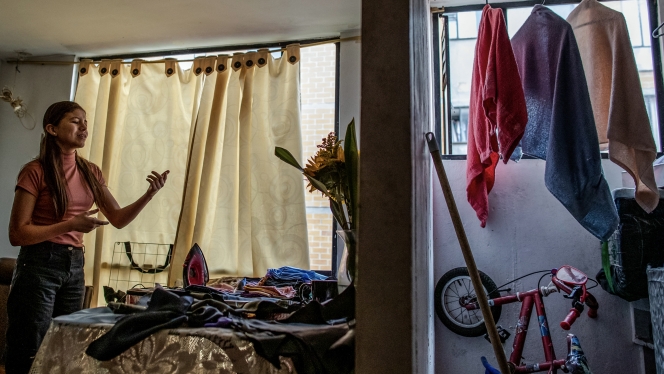A pair of lime-green ground famille-rose vases, Jiaqing seal marks and period - Sotheby's
each with a globular body rising from a spreading foot to a tall waisted neck, brightly enamelled against a lime-green ground with pairs of confronting butterflies, bats, peaches and endless knots interspersed amongst lotus blooms borne on meandering foliate sprays, all above a lappet band, the rim and foot encircled with ruyi and keyfret bands, glazed turquoise to the interior and base, the base inscribed with a six-character seal mark in iron-red. Quantité: 2 - 35cm., 13 3/4 in. Estimation: 200,000 - 300,000 GBP
PROVENANCE: Emily Gordon, Cluny Castle, circa 1870.
Thence by descent in the family.
NOTE: Exquisitely painted and finely potted, the present pair of vases belongs to a small group of Jiaqing mark and period wares that are favoured for the combination of their form and decoration. The intricate composition of auspicious motifs amongst leafy floral scrolls, seen on pieces in this group, suggest that they were produced as marriage gifts. The two facing butterflies represent a joyful reunion and marital happiness, the bats are a pun for blessings, the endless knot represents continuity, while the peaches symbolize longevity. Gunhild Avitabile in the exhibition catalogue From the Dragon’s Treasure, Museum fur Kunsthandwerk, Berlin, 1987, p. 33, interprets the meaning of this design combination as ‘May good luck (fu), longevity (die represented twice – twice seventy years) continue (lien) without interruption (symbol of the knot)’.
A vase of this type, decorated in famille-rose enamels on a similar lime-green ground, from the collection of George Weishaupt and illustrated Ibid., pl. 23, was sold three times, in our Amsterdam rooms, 16th October 1995, lot 28; in our Hong Kong rooms, 30th April 1996, lot 509; and in these rooms, 10th November 2010, lot 120. See another Jiaqing mark and period vase of this form decorated with two wide bands of lotus scrolls on a green ground, sold in our New York rooms, 4th June 1982, lot 280.
Slightly smaller Jiaqing mark and period bottle vases of this shape with ruyi sceptre handles on the neck, painted with dense flower scroll motif in famille-rose on a lime-green ground, are also known; for example, see two examples sold in our Hong Kong rooms, 12th May 1983, lot 232, and 2nd November 1998, lot 321.
The same auspicious design may be found on Jiaqing green-ground famille-rose jars, such as the piece sold in our Hong Kong rooms, 22nd May 1979, lot 271; and also on a turquoise-ground moonflask, with the butterflies featured prominently in the centre surrounded by bats and peaches, from the Qing Court collection and still in Beijing, illustrated in The Complete Collection of Treasures of the Palace Museum. Porcelains with Cloisonne Enamel Decoration and Famille Rose Decoration, Hong Kong, 1999, pl. 174.
For the inspiration of the decoration see a Qianlong covered cup with the motif of bats and peaches amongst a dense floral scroll, although lacking butterflies, on a gold-ground, in the Nanjing Museum, illustrated in The Official Kiln Porcelain of the Chinese Qing Dynasty, Shanghai, 2003, p. 263.
Sotheby's. Fine Chinese Ceramics and Works of Art. London | 15 mai 2013 - www.sothebys.com









































